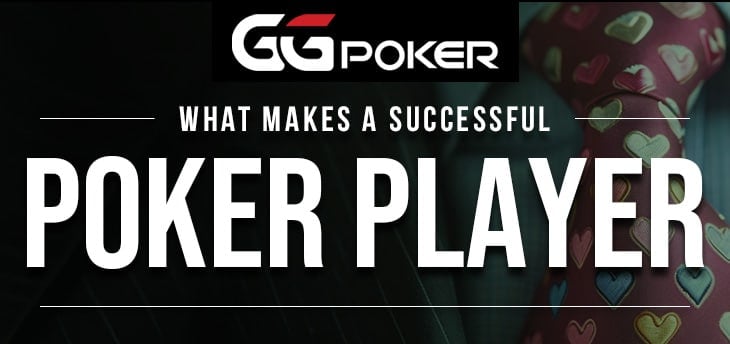Exploiting Your Opponent’s Betting Patterns

In the competitive world of poker, particularly online poker, understanding and exploiting your opponent’s betting patterns is a vital skill to learn if you want to succeed. Advanced strategies to decode these patterns can transform your game from average to formidable. This article reviews the nuances of these strategies and offers practical advice and examples to help elevate your play.
Identifying Betting Patterns
Before you can exploit an opponent’s betting habits, you must first identify their betting patterns. This involves meticulous observation and analysis over several hands. Are they an aggressive player who often raises pre-flop or do they bluff frequently? Are they a conservative player who only bets on strong hands or completely reckless, treating every hand like it is pocket rockets?
Key Indicators to Watch For
To exploit your opponent’s betting patterns effectively, you need to pay attention to several key indicators that can reveal their hand strength and overall strategy.
Frequency of Bets
Monitoring how often an opponent bets can reveal their level of aggression or passivity:
Pre-Flop: Frequent pre-flop raisers may be aggressive players looking to dominate the table. Conversely, players who rarely raise pre-flop might be more conservative, waiting for premium hands.
Post-Flop: Consistent betting on the flop, turn, and river can indicate confidence in their hand or an aggressive bluffing strategy. If a player frequently continuation bets (c-bets) after raising pre-flop, they might be trying to force folds regardless of their hand strength.

Bet Sizing
The size of bets relative to the pot can provide clues about hand strength:
Large Bets: Large bets often signify strong hands, especially on coordinated boards where draws are possible. However, large bets, particularly oversized bets, can be used to bluff, leveraging positional pressure they apply on opponents.
Small Bets: Small bets tend to be probing or blocking bets. These types of bets are used to gauge an opponent’s reaction or to prevent larger bets from being made. They can also indicate weaker hands or draws looking to see the next card cheaply.
Reaction to Raises
Observing how opponents react to raises can help you determine their hand strength and strategy:
Folding to Raises: Players who frequently fold to raises may be betting with marginal hands or a semi-bluff, folding when met with any resistance.
Calling Raises: Calling often can indicate a drawing hand or mid-strength hands. Hands that are too good to fold, but not strong enough to raise.
Re-Raising (3-betting): Frequent re-raises usually signal strong hands, particularly if the player has typically been folding or calling. However, skilled players have learned to use re-raises as a bluff, especially against tight opponents who can be forced to fold better hands.
When combined, these indicators can provide an introductory understanding of your opponent’s strategy and hand strength, enabling you to make more informed and strategic decisions at the table.
Exploiting Weaknesses in Aggressive Players
Aggressive players are known for frequently betting and raising, often putting pressure on their opponents. However, this style can become predictable. For instance, if you notice an opponent consistently raises pre-flop but folds to a re-raise, you can exploit this by re-raising with a broader range of hands.
Consider the Following:
Trap More: Against overly aggressive players, consider only calling with strong hands that could otherwise withstand a raise. This allows the aggressive player to continue their betting spree, potentially committing more chips to the pot, which you can win later.
Turning the Tables on Passive Players
Conversely, passive players often enter fewer pots and tend to call more than they bet or raise. Exploiting this tendency will allow you to take control of the pot more frequently and use their reluctance to your advantage.
Strategies to Exploit Passive Players:
- Increasing Aggression: Raise more often, especially in position. Passive players are likely to fold or call rather than re-raise, allowing you to control the game.
- Bluff Effectively: Since passive players are less likely to challenge your bets, a well-timed bluff can be very effective as it can immediately win you the pot or, at worst, give you further information about your opponent.

Reading the Bluffs
One of the most thrilling aspects of poker is the bluff. Recognizing when an opponent is likely bluffing, based on their betting patterns, can dramatically increase your edge. For example, if a typically conservative player suddenly makes a huge bet, it might indicate a bluff.
To Counter Bluffs:
- Look for Inconsistencies: If an opponent’s actions don’t align with the potential hands suggested by the community cards (the story they are trying to tell does not make sense), they might be bluffing.
- Apply Pressure: If you suspect a bluff, don’t be afraid to call or even raise, and put the decision back on them.
The Role of Position
Position is a crucial factor in poker and can be used to exploit betting patterns. Being in a later position (closer to the dealer button) allows you to observe how your opponents act before you make your move. Use this information to maximize your advantage by adjusting your strategy based on their actions.
Putting It All Together:
While observing betting patterns is crucial, integrating this knowledge into a broader strategic context is what differentiates good players from great ones. Always consider the texture of the board, your hand, and your opponent’s potential holdings before making your move.
A Few More Tips:
Maintain a balanced style: Avoid becoming predictable yourself. Always mix up your play to keep your opponents guessing.
Stay focused: Playing poker, particularly online poker, can be a grind, and anyone could easily become distracted. Stay attentive to pick up on subtle changes in your opponent’s play. If you find your attention wandering, maybe sit out a round or two and go wandering yourself – some fresh air can do wonders.
Conclusion
Mastering the art of exploiting betting patterns requires patience, keen observation, and the ability to adapt. By understanding the strategies above, you can enhance your skills in both live and online poker environments, giving you a significant edge over your competitors. Remember, poker is about the cards you hold AND understanding the players at your table. By learning and remembering these psychological aspects, you are on your way to setting up long-term success.





